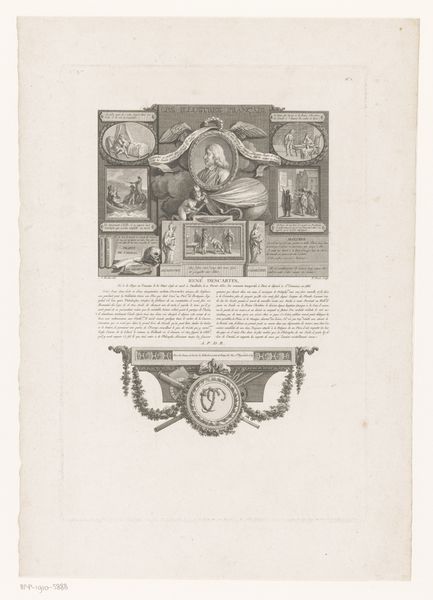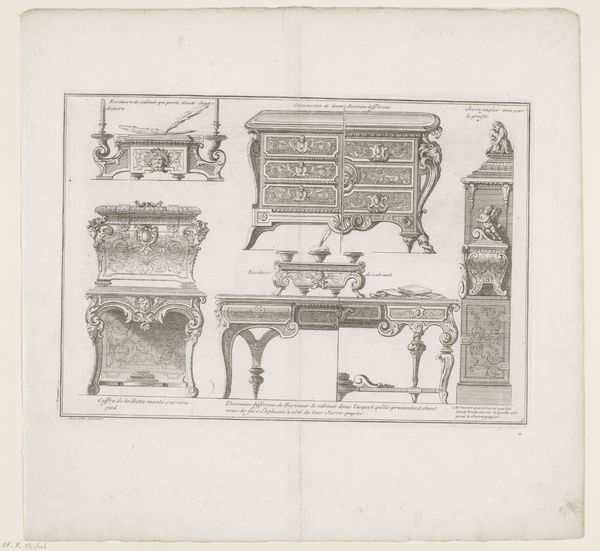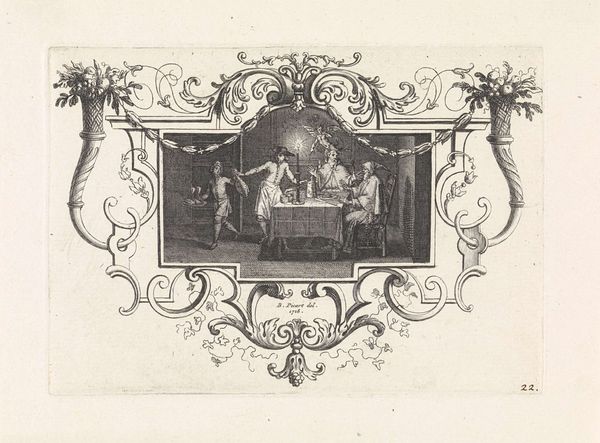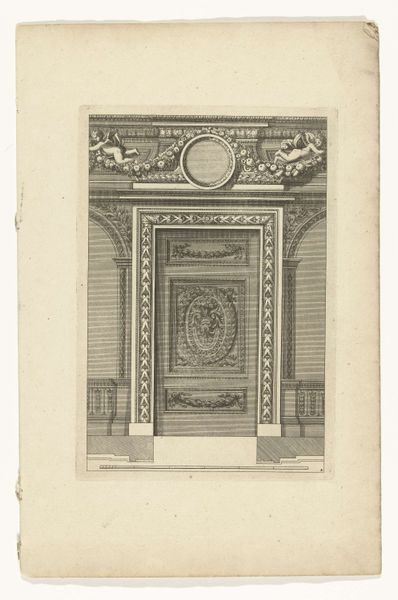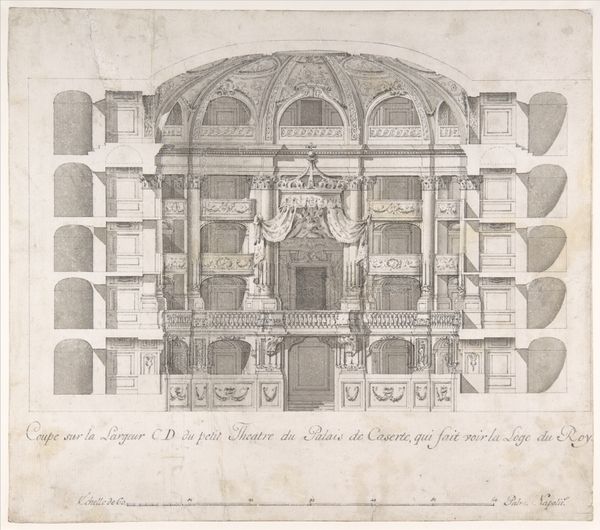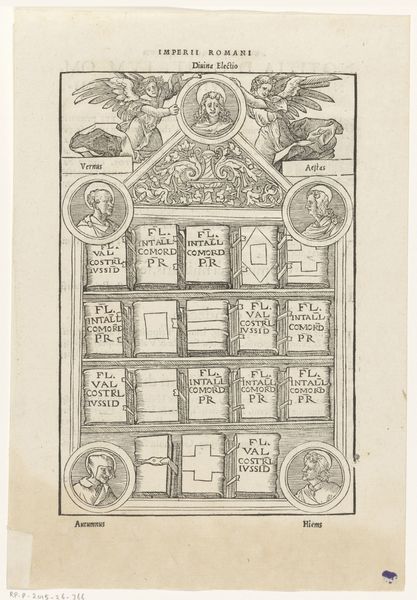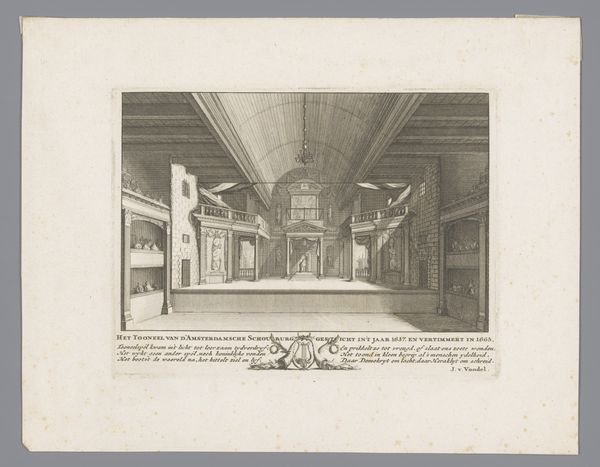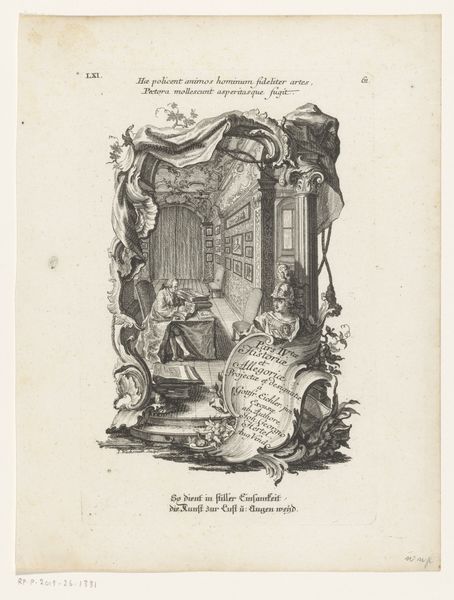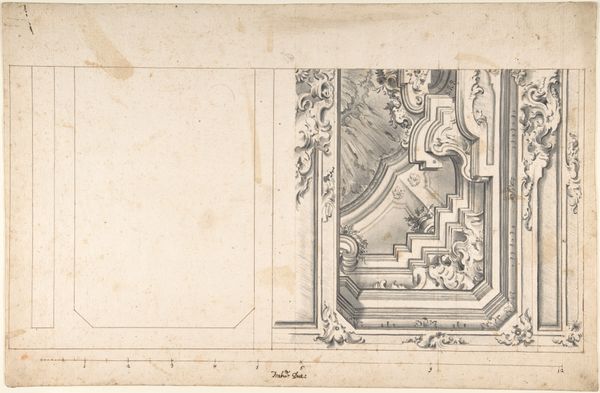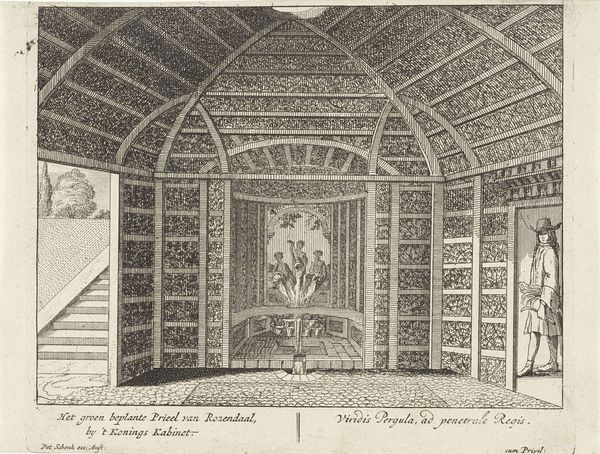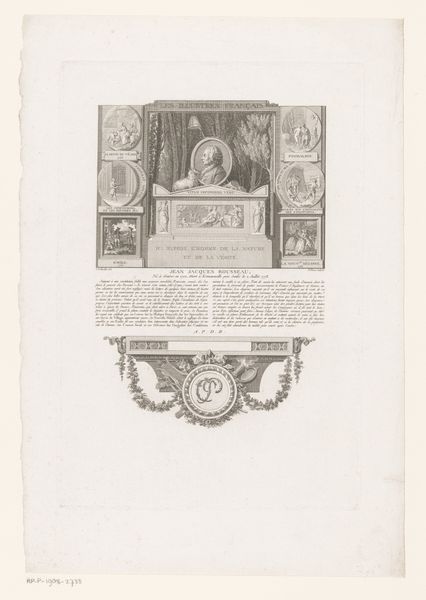
print, engraving
#
portrait
#
baroque
# print
#
pen sketch
#
old engraving style
#
geometric
#
pen-ink sketch
#
line
#
pen work
#
genre-painting
#
engraving
Dimensions: height 124 mm, width 150 mm
Copyright: Rijks Museum: Open Domain
Curator: Here we have Johann Ulrich Kraus’s “Ex libris van Zacharias Conrad von Uffenbach,” an engraving dating from the early 1710s. Editor: It immediately strikes me as a celebration of order. The architectural space and floral ornamentation all tightly composed within that strong oval shape. There's a lot to take in at once, but it all seems very...controlled. Curator: Precisely. Note how the artist meticulously renders depth, guiding our eye down the long corridor lined with countless books. It is an almost mathematical approach to space. The sharp lines defining each volume on the shelves offer a grid, contained within an oval cartouche. It becomes a world unto itself, self-contained. Editor: Yet, that order feels almost oppressive. All those books—what voices are included, and which are silenced? I'm curious about who Zacharias Conrad von Uffenbach was. A bookplate signifies ownership and privilege, a gatekeeping of knowledge. I wonder what biases were reflected in this carefully curated library. The inscription at the top, "Non omnibus idem est quod placet", seems to imply not everyone likes the same books, or perhaps, not everyone *has* access. Curator: I agree with your points. But note the execution and the refinement in Kraus's line work; his skill elevates the mundane. Even the shadows, achieved through dense hatching, reveal a masterful hand. We can appreciate this simply for the intricacy, the composition’s elegant dance of geometric shapes. Editor: Of course. But considering its purpose - an ex libris - we must view it within a wider cultural and social framework. Libraries were and are symbols of power and status, which historically was usually acquired through exclusionary means. Reflecting on accessibility challenges us to critically evaluate power structures—who gets to write the story, and whose stories are excluded from those endless shelves? Curator: I grant your reading certainly enhances the appreciation of Kraus’s artwork, as it reveals not just an aesthetic feat but the underlying societal constructs. Editor: Yes, seeing the details in the drawing style enhances this message, adding depth to the formal harmony. The tension of how it’s crafted in conjunction with why, provides a more complete interpretation.
Comments
No comments
Be the first to comment and join the conversation on the ultimate creative platform.
